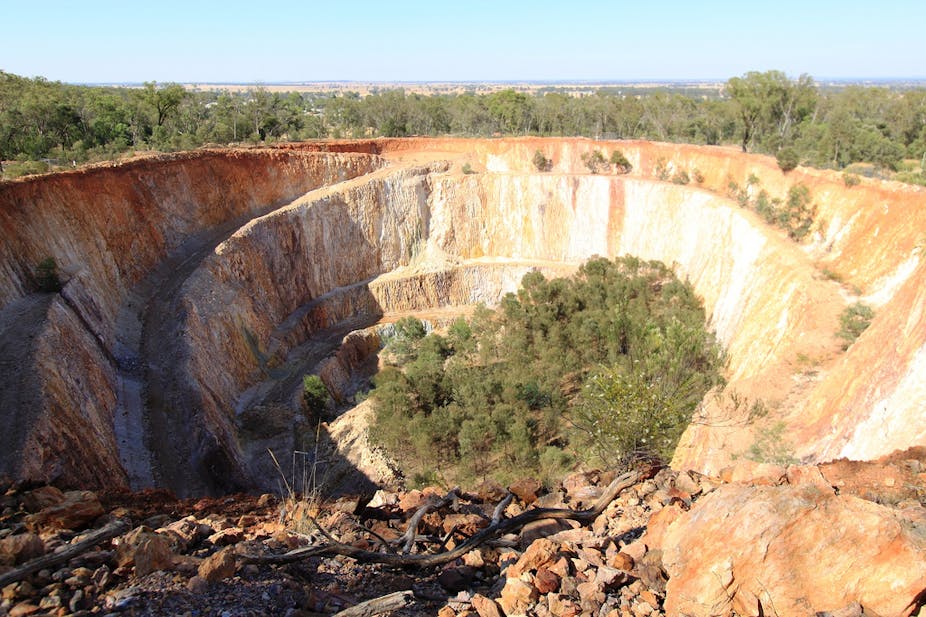Biodiversity offsets are touted as a new tool for protecting our natural environment. While they have the potential to deliver real gains, understanding the possible consequences of these polices over the long-term raises many challenges.
These policies aim to balance biodiversity loss arising from habitat destruction at one location by enhancing and/or protecting similar but separate habitat at another location.
Many countries around the world are embracing biodiversity offset policies. In Australia, the Commonwealth Government and most state governments have either implemented or are in the process of implementing biodiversity offset policies.
Defining our terms
Two important questions come up when designing these policies:
- What do we want the policy to achieve?
- How will we know if the policy has achieved its objectives?
Many biodiversity offset policies have a stated aim of delivering a “net gain” or “no net loss” in environmental values. These values can include native vegetation, species habitat or ecosystem services. While this is certainly a worthy objective, in practice it may be difficult to achieve for a whole raft of reasons that are beyond the scope of this article.
Regarding the second question, it can be a huge challenge to actually establish whether an offset policy is meeting its objectives.
The first task is to determine how to measure losses and gains - the “currency” the offsets will deal in. We mostly don’t know the full extent of biodiversity lost at one site, or gained at another. Thus we have to use surrogate measures that we hope will be good indicators of the real things we are trying to preserve.

In Australia the area and condition of native vegetation is a commonly used surrogate. Gains from an offset are measured in changes to the condition and area of the native vegetation contained in the offset.
Other subtle issues arise once we have chosen our “currency”. For example, at some point in the future, do we count the gains from an offset site relative to what was there originally, or relative to what would have been there at if the offset had not been created. In other words, from what baseline do we measure gains?
Doing the maths
A simple example can be useful to illustrate these issues. Assume a single site is developed and all vegetation is cleared. Simultaneously, an offset is implemented. Here we will assume the “score” of a site is calculated from its area multiplied by a measure of its native vegetation condition.
The development and offset sites have scores of D and O just before these actions occur. After some years of management the offset has, or is expected to have, a new (hopefully higher) score of O’.
To achieve a net gain using the current condition as the baseline would require O’ > O + D. This means the condition of the offset site has improved so its score is now greater than the initial scores of the offset and development sites. This could be interpreted as a real gain relative to what we have now.
To achieve a net gain using the status quo as the baseline is a little more complicated. We introduce O" and D" which represent the score that the offset and development sites that would have if no development or offsetting had occurred. Now we instead require O’ > O" + D".
If we assume that the condition of the vegetation on the offset and development site would have been degrading without any sort of intervention (a reasonable assumption in many parts of Australia) then O’ > O" + D" might still hold even if the offset site has no change in condition (O = O’). This is because O" and D" are now smaller than O and D and the offset can be seen to deliver a net gain though avoiding degradation that would have otherwise occurred at the offset site.

Finally, the least stringent requirement is that the offset delivers a net gain relative to what we could call a worst case scenario. Using this baseline assumes that development will occur with or without the offset and that the offset policy should only deliver a gain relative to development without the offset policy.
In this situation we would only require O’ > O or O’ > O" which potentially delivers the smallest gain compared to the other two baselines.
Choosing a baseline
There are some practical considerations in choosing the baseline from which to measure policy performance. For example, using a baseline other than the current condition involves predicting what would have happened without the offset (and development) occurring. This adds some “fuzziness”, as we can never be completely sure of what would have happened without these actions being implemented.
The most important driver in our choice of baselines is our values. Requiring an offset policy to deliver “no net loss” using the worst-case baseline would result in a very different outcome compared to using the current condition.
There is no right or wrong answer to which baseline we use, but the choice should in part be driven by how we value retaining our biodiversity relative to economic development.
Whatever our values, we should at least be transparent about what we want our policy to achieve and how we will go about measuring this. This involves clearly articulating the baseline we are measuring from and the assumptions this implies.
The recently released draft biodiversity offset policy from the Commonwealth Government outlines how offsets would be used under the Environment Protection and Biodiversity Conservation Act 1999. Although not stated in the draft policy document, the Department has clearly stated that the goal of their policy is to maintain or improve compared to what is likely to have occurred under the status quo. Thus it looks like we will be stuck with the inherent uncertainty associated with using this baseline to evaluate the performance of the EPBC Act offset policy.

